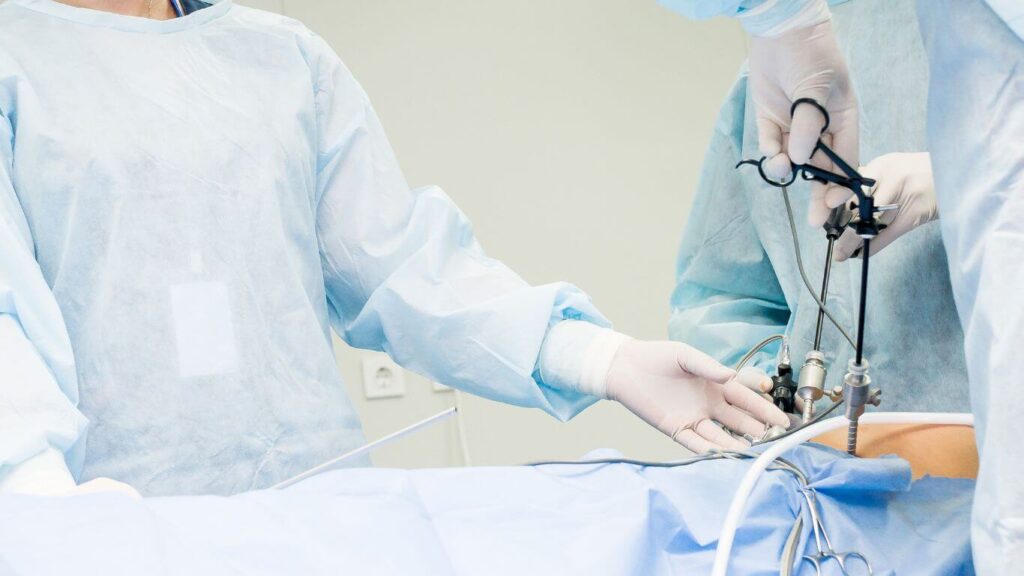Laparoscopic Surgery for Endometriosis
Laparoscopic surgery removes endometriosis tissue, easing pain and preserving fertility

Laparoscopic Surgery for Endometriosis: Minimally Invasive Relief
Laparoscopic surgery is a highly effective, minimally invasive procedure used to diagnose and treat endometriosis, a condition where tissue similar to the lining of the uterus grows outside the uterus. This can lead to chronic pelvic pain, heavy periods, and fertility issues. Laparoscopic surgery allows for the removal or destruction of this endometrial tissue, providing relief from symptoms and helping preserve fertility.
What is Endometriosis?
Endometriosis is a condition in which tissue similar to the uterine lining grows in places like the ovaries, fallopian tubes, or pelvic lining. It can cause severe pain, heavy menstrual bleeding, and in some cases, infertility. Symptoms may include:
- Pelvic pain, especially during periods
- Painful intercourse
- Painful bowel movements or urination
- Heavy or irregular periods
- Difficulty getting pregnant
What is Laparoscopic Surgery for Endometriosis?
Laparoscopic surgery for endometriosis is a minimally invasive procedure where a laparoscope (a thin tube with a camera) is inserted through small abdominal incisions. This allows the surgeon to view and remove or destroy the endometrial tissue outside the uterus. The surgery aims to alleviate pain, reduce symptoms, and improve fertility outcomes.
Key Benefits:
- Minimally invasive with small incisions
- Reduced post-operative pain
- Shorter recovery time compared to open surgery
- Improved fertility outcomes
- Lower risk of recurrence with complete tissue removal
Who Needs Laparoscopic Surgery for Endometriosis?
Laparoscopic surgery may be recommended for women who:
- Have moderate to severe endometriosis-related pain
- Experience heavy periods or painful intercourse
- Struggle with infertility due to endometriosis
- Do not respond to hormonal treatments or other medications
- Want to preserve their fertility while managing symptoms
Preparing for the Surgery
Before surgery, your doctor will:
- Conduct imaging tests such as an ultrasound or MRI to assess the extent of endometriosis.
- Discuss your medical history, current medications, and overall health.
- Provide instructions on stopping certain medications and fasting before the procedure
The Surgical Procedure
- Anesthesia: The surgery is performed under general anesthesia.
- Incisions: Several small incisions are made in the abdomen.
- Laparoscope Insertion: A laparoscope is inserted to allow the surgeon to view the endometrial tissue.
- Tissue Removal: The surgeon removes or destroys the endometrial tissue using specialized instruments.
- Completion: Once all visible tissue is treated, the incisions are closed, and the patient is moved to recovery.
Recovery After Surgery
- Hospital Stay: Most patients return home the same day.
- Post-Surgery Care: You may experience mild discomfort, bloating, or fatigue. Pain medication will be prescribed.
- Return to Activity: Light activities can resume in a few days, but heavy lifting or strenuous activities should be avoided for 2-4 weeks.
- Follow-Up: A follow-up appointment will ensure proper healing and evaluate the surgery’s success in managing symptoms.
Potential Risks and Complications
While laparoscopic surgery for endometriosis is generally safe, some risks include:
- Bleeding
- Infection
- Damage to surrounding organs (bladder, bowel)
- Recurrence of endometriosis
- Formation of scar tissue (adhesions)
Your surgeon will discuss these risks with you and take steps to minimize them during the procedure.
Benefits of Laparoscopic Surgery for Endometriosis
- Effective Symptom Relief: Laparoscopic surgery can significantly reduce or eliminate endometriosis-related pain.
- Minimally Invasive: The use of small incisions leads to quicker recovery, less post-operative pain, and minimal scarring.
- Fertility Preservation: For women hoping to conceive, laparoscopic surgery improves the chances of pregnancy by removing endometrial tissue that may hinder fertility.
- Lower Risk of Complications: Compared to traditional surgery, the laparoscopic approach has fewer risks of infection, blood loss, and prolonged recovery time.
When to Contact Your Doctor?
After surgery, reach out to your doctor if you experience:
- Severe abdominal pain not relieved by medication
- Heavy bleeding
- High fever or signs of infection
- Difficulty urinating
- Any other abnormal symptoms
FAQs
Will this surgery cure my endometriosis?
While laparoscopic surgery can remove endometrial tissue and provide symptom relief, there is a chance that the condition may recur over time.
How long does the surgery take?
The procedure typically takes 1-3 hours, depending on the extent of the endometriosis.
Will I still be able to get pregnant after surgery?
Yes, laparoscopic surgery often improves fertility outcomes for women with endometriosis.
Is the recovery process painful?
Post-surgery pain is usually mild and manageable with medications. Full recovery typically takes 2-4 weeks.
